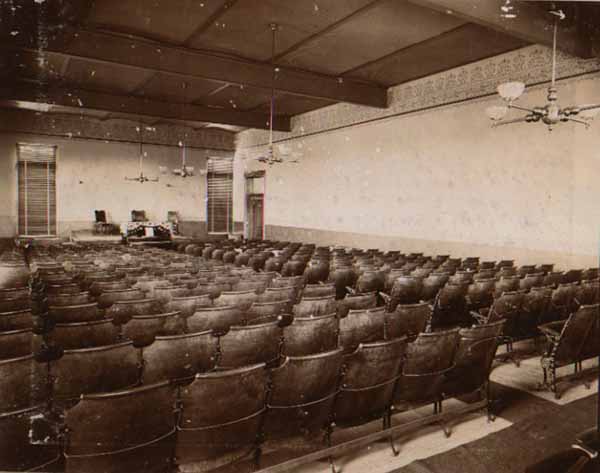
Return to Heritage Tour
Virtual Tour
This photo shows the entry hall of the library. The frame on the left wall holds a portrait of the building's benefactor, Andrew Carnegie. The carved newel post, stencilled walls and potted palm are indicative of the building's Victorian origins.
Construction of the building began in mid-1892 and was completed on March 29th, 1893. The library opened on September 29th and had several hundred visitors.
1. Entry Hall of the Library.
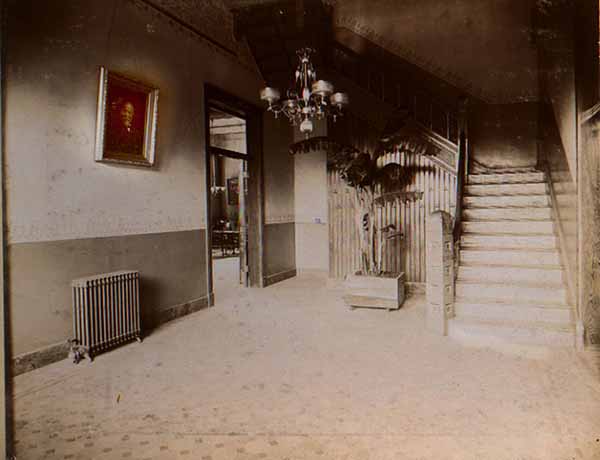
The second photo is the ornately embellished reading room. The large wall-hanging at the photo's center-right is a memorial to the fallen soldiers of Jefferson County. Shelves below the memorial held records of each and every soldier from the county who had died in battle.
This photo is another good illustration of the architectural and decorative details typical of the period, from the coffered ceiling to the curliqued stair railings.
2. Reading Room.
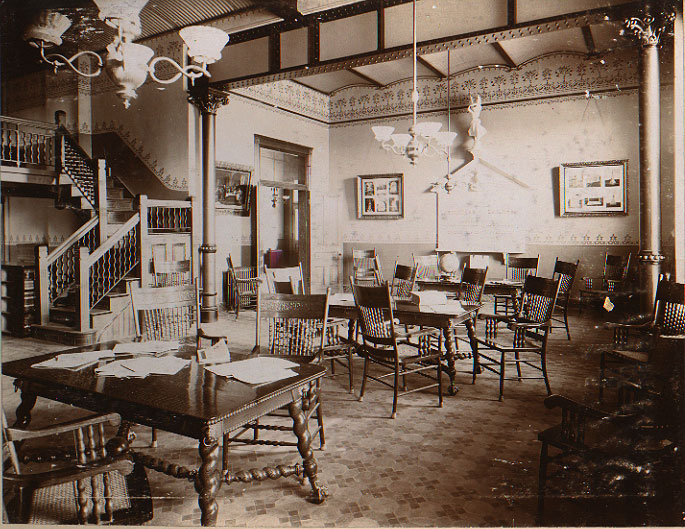
The third 1894 photo depicts the circulation desk and librarian A.T. Wells. Behind the desk one can view the tall, metal stacks that held the library's collection. This shelving cost $3,000, an expense that was in addition to the library's building contract.
By March, 1878 the library held 5,960 bound volumes and received about 16,000 visitors per year, thus one can only imagine the joy the residents of Fairfield took in their new building.
3. Librarian A.T. Wells at his desk.

The room below served as both the library director's office and the cataloging space.
Fairfield was the first community to receive a grant from Andrew Carnegie without stipulations.
Previously, Carnegie had always included a prerequisite requiring an annual contribution from recipient communities of at least ten percent of a library's construction cost, money intended to be used for library upkeep. The story goes that Carnegie was so impressed by the town's long labors at building and sustaining a library that he decided circumstances justified forgoing such a stipulation.
4. Director's Room
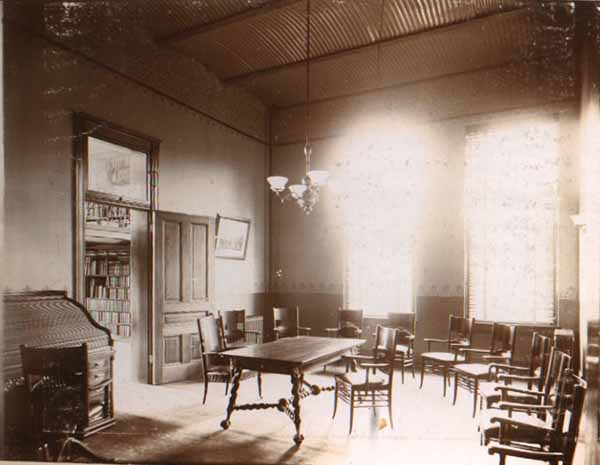
The library's third floor housed a natural history museum. This space contained an impressive collection of artifacts donated by local citizens: mounted birds and animals native to Iowa, American Indian relics, relics of Swiss lake dwellers, Roman antiquities, and a cast of a rare Aztec calendar.
The museum also housed a collection of land and water animals donated by the Smithsonian Institute:this donation has led to musings on a possible family connection between Senator James Wilson's wife, Mary A.K. Jewett, and Charles Coffin Jewett, a librarian at the Smithsonian.
Another glass case in the library held a solid steel model of the U.S. Battleship Iowa, donated by the Cramp Brothers shipbuilding firm of Philadelphia through the intervention of John Speilman, an employee of the Carnegie Steel Company.
5. Museum room of the Library.

The photo below depicts the library's lace collection, donated by a local citizen who had acquired it during travels in Europe. The fate of this collection is unknown. At the edges of the image one can see the decorative border of the album that houses the original photographs.
This album was a gift sent to the Carnegie Corporation in 1894 in recognition of its contribution to the town, and was returned to Fairfield in more recent years when it was found during archival reorganization at the corporation.
6. Lace Room
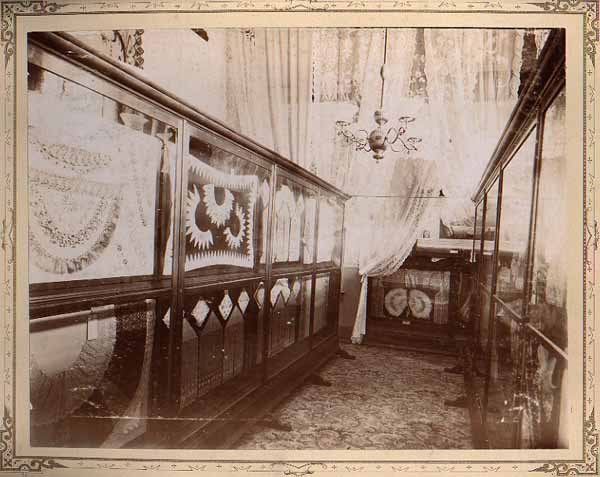
The Agassiz Society, a natural history study group, met in the room shown below.
In the center of the photo one can see the large flannel-covered table used by the group, which revolved in order for microscopes to be passed between members.
7. The revolving table used by the Agassiz Society.
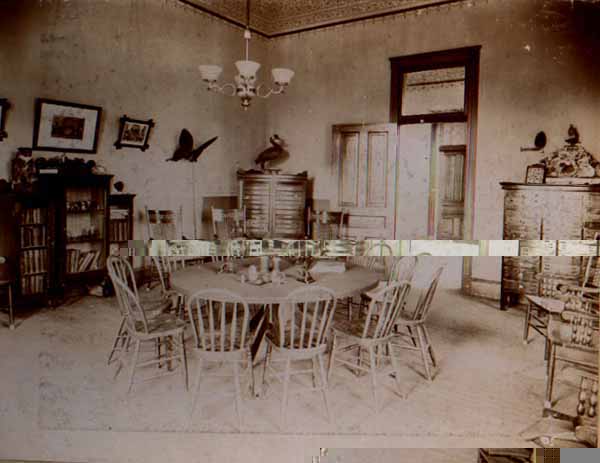
The library's auditorium was the site of its dedicatory exercises on November 28, 1893.
The auditorium also held the library's grand piano, donated by Rachel Hampson, and was the site of many musical events in early Fairfield as well as lectures, meetings, poetry recitations, and performances of all varieties.
Auditorium.
